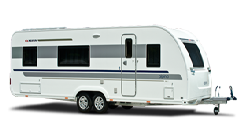

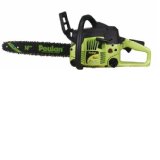
Search This Site
Search With Google
Drilling Into Concrete
Drilling concrete can provide a new test for any DIY enthusiast. Perhaps you want to put up some shelves in the garage or a utility room. Using your standard cordless drill and standard masonry bits will simply not suffice. Using standard masonry bits will result in them burning up and turning bright red without you even making a dent in a concrete wall. Add to this the unnecessary strain on your drill unit and it will not be long before you realise that you are under equipped.
When it comes to drilling into concrete you need the right tools and tool bits. This is where the sds drill steps forward. Drilling concrete is not actually “drilling” in the same sense as drilling into wood for example. The sds drill and the sds drill bit actually pulverize the concrete in front of the bit whilst the flutes of the sds drill bit pull out the dust from the hole. Basically what is happening here is a hammering action and that is why the sds hammer drill is the tool you need for drilling into concrete.
There are basically two types of hammer drill for drilling into concrete. These are the hammer drill and the rotary hammer drill. Both come as a sds drill version. The hammer drill is used for drilling holes in concrete for half an inch or less. For drilling larger holes in concrete the rotary hammer drill is the tool for you. The sds rotary hammer drill is more of a tool for the professional worker as it also has the capacity to drill small holes as well as large holes. The hammer drill can not be used to drill large holes at all. So bear this in mind when it comes to choosing a sds drill and choose accordingly dependant upon your requirements.
The hammer drill is definitely one of the essential tools every home should have. Practically all the major brands produce their own versions of the drill. They can be used for drilling small holes in the majority of materials providing that you use the correct drill bits. As good and useful as the hammer drill is, it does have a drawback. The impact mechanism in a hammer drill will cause much vibration at high speed. So for use on small projects is fine, but for all day working another solution should be found.
And the only real option is the sds rotary hammer drill. Where drilling concrete is concerned this type of drill is the elitist. By working in the manner of a jackhammer concrete can simply not resist it. The concrete gets pulverized smoothly and efficiently and quite significantly in a quieter manner than with a hammer drill. To cut a long story short, you can drill faster and larger holes with the sds rotary hammer drill. They are however expensive to buy and the specialized drill bits will also hit the wallet hard. So unless you are working on large projects all of the time, the best economical option for you s to hire one by the day.
The sds drill has been designed to drill into tougher materials more efficiently. So whenever you come across concrete that needs to be drilled in always ensure that you have the correct combination of sds drill and sds drill bits. This way you will always ensure that drilling concrete will be successful and done correctly.
How To Drill Into Concrete
When it comes to drilling concrete, the process is not that much different from drilling into wood. You can use a handheld drill and if you require larger holes then a hammer drill or rotary hammer drill is required. One essential item you do however require for drilling into concrete is a carbide tipped drill bit the size of the hole that you require.
Steps For Drilling Into Concrete
First of all you need to drill a pilot hole so begin work with a small diameter masonry bit.
Insert the drill bit into your sds drill and set the clutch setting on your drill to the highest number.
Take some masking tape and use this to mark on the drill bit the depth of hole you wish to achieve.
When drilling always keep the drill perpendicular to the work surface.
If you are using a standard drill and not a sds drill you need to pull the drill out of the hole every 10 seconds or so and put it back in the hole. This will create a hammer action that the standard drill lacks and help the drill bit to get an actual bite on the concrete. With the standard type drill, as opposed to the sds drill, you will probably find that your progress is slow. You can try to speed up the process by inserting a masonry nail into the hole and hitting it with a hammer to try and break up the concrete.
Once your pilot hole has been successfully drilled, you can then change drill bit and use a different one in the same manner to achieve the hole size that you require.
Tips For Drilling Into Concrete
When drilling concrete you need to continually remove any concrete debris such as dust and bits from the hole. This will allow you faster drilling. You can blow out a hole using an air hose or even compressed air in a can.
Most drills will have a depth gauge on them. These are very useful and you should always use them when drilling a hole to get the desired correct depth. However if your drill does not feature a depth gauge then masking tape can be used on the drill bit. Drill bits for drilling concrete can be either a multi purpose masonry bit which can be used with hammer drills and standard drills. Another type of drill bit is the specialized sds drill bit. These can only be used with the sds drill because of the special chuck.
When drilling into concrete let the drill do the work for you. If you apply excessive force to the drill you may find that your drill bit will break.
A hammer drill is a good choice for drilling into concrete. And with one of these you only need to pull the bit out of the hole occasionally to remove any dust or debris. If you find that your drill bit heats up significantly then you can use water over the drilling area to reduce the heat. Use water in the hole as well to cool down the friction between the drill bit and the sides of the concrete hole.
A standard drill will take longer to drill into concrete than a sds drill. In fact your standard drill may not even be capable of drilling into concrete. So always use a hammer drill or a sds drill. To drill into concrete actually requires two actions. These actions are hammering and drilling. The hammering action will break the concrete and the drilling will remove the debris.
For drilling a hole into concrete over half an inch in diameter always use a sds rotary hammer drill. Another option available to you is to use a core drill.
Precautions When Drilling Concrete
When drilling into concrete you need to take the necessary precautions and operate the sds drill correctly in order to work safely.
Eye protection is a must. You should either wear safety glasses or goggles when actually drilling or cleaning out any dust and debris from the hole.
Bear in mind that the older the concrete ie, the tougher it will actually be to drill.
If you attempt to break the concrete with a masonry nail do not drive the nail too far into the concrete. If you do it will be extremely difficult to remove.
If you use water to cool down the drill bit and the hole, be careful not to get water in to the motoer of your sds drill.
Drilling concrete can produce a lot of dust. This can prove to be dangerous to your health if breathed in. So always wear a dust mask of some variation.
Not all are aware that the stones in concrete can actually explode when drilled in to. If a stone does this it will expel tiny chips which can head towards your face and eyes.
Gloves should always be worn when drilling into concrete. The drill bit can get extremely hot and if it comes in to contact with bare skin it can cause some serious damage and a lot of pain.
When using a hammer drill for drilling into concrete a lot of noise is produced. Protect your ears with appropriate ear protectors.
Moisture Meter Guide 2010 Contact details:garnett65@hotmail.com
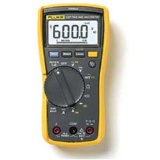

The complete moisture meter website
Moisture Meter Guide
Boat Moisture Meter
A moisture meter proves itself to be a useful tool when testing the moisture content levels of boat materials. When assessing a boat, care, judgement and experience should all be employed and then the moisture meter used as the last tool to give the final assessment. Moisture meter to test your boat
Need A Chainsaw For Firewood?
The petrol chainsaw is used to fell trees, as well as for pruning and cutting overgrowth. Tree surgeons favour the petrol chainsaw and use it for cutting away branches and foliage. A chainsaw to cut your own firewood
Orchid Moisture Meter
The orchid belongs to a widespread and very diverse family of flowering plants which have fragrant and colourful blooms. Orchids can be found in pretty much every habitatTest your soil condition for your orchids
Caravan Moisture Meter
Any caravan that is kept open to the elements all year round can become very susceptible to damp and damp related problems if proper precautions are not taken to prevent this.
Ensure your caravan is not damp

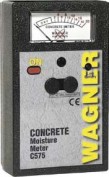
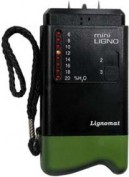
Garden Moisture Meter
The garden moisture meter helps any avid gardener to measure and monitor many different conditions to ensure that they can maintain healthy growing conditions for both indoor as well as outdoor plants. In order to have healthy thriving plants

Core Drill
An alternative to the sds drill for drilling into concrete is the core drill. The core drill is a drill that has been specifically designed to remove a cylinder from the material it is drilling in to. The drill bit of the core drill will drill down in to a particular material like concrete and the material that that remains in the drill bit is known as the core. Within the construction industry a diamond tipped core drill is often used for drilling and creating holes for pipes and wires in materials such as stone and concrete. The core drill can be powered by electricity or be pneumatic and hydraulic.
The concrete core drill is a specialist drill used to drill through various thicknesses of concrete using a wide range of concrete core bits. Concrete core drilling can prove to be a timely and rather difficult procedure for the average DIY enthusiast and instead a sds drill will provide a easier and simpler solution. However the core drill has the advantage of being able to drill holes in concrete with larger diameters than those holes drilled with a sds drill.
The concrete core drill comes in two different versions. There are the handheld versions which are mobile and can be used in many applications to drill holes in concrete. Then there are the stand mounted core drills which have a stand to support them. These tend to be large and work at drilling large holes.. These types of core rigs are more stable and have added security. The stand in which supports them is fastened to the surface using bolts. The surface can be either vertical or horizontal. They are perfect for removing large amounts of concrete.
The concrete bits for the core drill work in the same fashion as wood hole saws and are mounted on shafts to accommodate a large number of concrete depths. There are even extenders for these core drill bits to allow even greater depths to be reached. The core drill bit will have diamond teeth so as they can be able to penetrate concrete simply and easily. The working life of a concrete core drill bit will vary depending on the make and how much is asked of it. However each drill bit should be always kept sharp and never used when they are worn out.
Bear in mind that there are many companies who specialize in offering their services for concrete core drilling. It may be that you only wish for a small amount of work to be carried so on the economical front it could be a better solution for you to hire a company to do the work for you. Buying a core drill and the bits can prove to be very expensive. If you can get away with just using a sds drill, then that is the option we suggest you follow.
Using A Core Drill
Drilling into concrete can be done satisfactory with a core drill. The core drill is versatile and can be used to drill in to a variety of materials. For concrete drilling you need to ensure that you have the correct diamond edge drilling bit. Diamond drill bits will outperform their standard carbide counterparts in the speed of drilling and the results. These concrete core bits are very easy to use and can be used with any drill.
The core drill with a concrete core bit is used for drilling larger holes in concrete than that of which a sds drill can drill. When drilling applying pressure to a core drill may well reduce the time to do the job, but you will be increasing the risk of heat fracture and material breakage. So try to avoid this and allow the core drill to do the work for you at it’s own pace. If you use the core drill correctly the bits should never be too warm to the touch. If black or yellow marks become visible on the core bit then the core bit has suffered from extreme heat. This could mean that you are running the drill at too high a speed or applying too much pressure. It is worth remembering that concrete core drill bits do blunt very quickly and can shatter from excessive heat and friction. So be observant when using the core drill.
In operation it is imperative that you keep the core drill as straight as possible. This will protect the bits from getting damaged. Always wear safety eye wear as well. A shattered core bit can pose a great hazard to the eyes.
Concrete Cutting
As well as drilling concrete on a DIY project you may be faced with the need to cut concrete as well. The core drill and sds drill are the tools for drilling into concrete, but for actually cutting the concrete you will require a different tool. The concrete cutter.
A concrete cutter is a power tool which is used to cut any hard materials such as bricks, blocks and of course concrete. The blades on a concrete saw are usually made using diamond or titanium for them to cope with the task in hand. The blades can be small for handheld machines or large for concrete cutters that have a base.
With a concrete saw the blade runs very fast to assist with the successful cutting of hard substances. There is always a large amount of friction with a concrete saw and the blade will need to be cooled periodically. Safety with one of these machines is paramount and one should always inspect one thoroughly before using to ensure that it is in good condition and there are not any pending problems.
The drive pin hole of the concrete saw should always be free of any distortion. The core of a concrete saw blade is made from steel. When going over the machine with a pre use check particular attention must be paid to this blade. You need to ensure that there are no cracks in it because the torque of the machine may force the blade to slide out from the machine.

A hammer drill is a versatile and powerful drill to own. Add the sds drill system to a hammer drill , and what you have is a hammer drill with a much improved hammer action resulting in greater drilling power Sds Hammer Drill.
Sds Hammer Drill
On This Site
Cordless SDS Drill

A cordless sds drill offers you the flexibility that is required in the building trade. No longer are you reliant on an electrical socket and for working literally anywhere the cordless sds drill has to be the choice. Cordless SDS drill
Safety With The Sds Drill

When using any power tool it is essential that you follow all working procedures correctly and wear all the appropriate safety gear to protect yourself. SDS drill safety
Accessories For SDS Drill
For continued successful usage of the sds drill you will require all the necessary accessories such as sds drill bits. Sds drill accessories


The choice of many, the Dewalt sds drill has built itself a reputation of quality and reliability. Dewalt sds drill
Dewalt
| Tramex Moisture Encounter Plus |
| Tramex Compact Wood Moisture Meter |
| Tramex Concrete Encounter Moisture Meter |
| Tramex Skipper Plus Moisture Meter |
| Tramex Roof And Wall Moisture Scanner |
| Sonin Digital Moisture Meter model 50218 |
| Sonin Digital Moisture Meter 270 model 50270 |
| Sonin Moisture Test Tool model 50210 |
| Sonin Moisture Test Meter Model 50211 |
| Oak |
| Douglas Fir |
| Beech Tree |
| Elm Tree |
| Hickory Tree |
| Maple Tree |
| Pine Tree |
| Prevent And Repair Gaps In Wooden Floorboards |
| How To Fix A Squeaky Hardwood Floor |
| How To Repair A Hardwood Floor That Has Buckled |
| Which Is The Best Firewood? |
| Concrete |
| Concrete Moisture |
| Screed Moisture Meter |
| SDS Drill |
| Belle Cement Mixer |
| SDS Drill Advice |
| Which SDS Drill |
| SDS Drill Accessories |
| Drilling Into Concrete |
| Kennedy Tool Box |
| Moisture - Basic Facts |
| Types Of Damp |
| Wet Rot |
| Dry Rot |
| Mold |
| Water Leak Detection |
| Stucco Moisture |
| Water Damage |
| Moisture And Rust |
| Moisture Damage To A Chimney |
| Wallpaper Stripper |
| Plaster Mixer |
| Why Worry About Moisture Problems |
| Does Your Home Have A Moisture Problem? |
| How To Solve Moisture Problems |
| How To Use Anti Mold Paint |
| Rising Damp |
| Condensation |
| Salt Damp |
| How To Avoid Bathroom Condensation |
| How To Remove Black Mold |
| How To Prevent Bathroom Mold |
| Soldering Kit |
| Soldering Kit Contents |
| Soldering Kit Advice |
| Bonsai Tree Classification |
| Growing Bonsai From Seed |
| Bonsai Tree Care |
| Bonsai Tree Training |
| Bonsai Tools |
| Displaying Bonsai |
| Bonsai Calendar |
| Bonsai Plants |
| The Thirsty Light Curve Moisture Meter |
| The Thirsty Light Ladybird Moisture Meter |
| The Thirsty Light Bumble Bee Moisture Meter |
| The Thirsty Light Butterfly Moisture Meter |
| Hanna Instruments |
| Agratronix Portable Coffee Moisture Tester |
| Lawn Aerator |
| Lawn Roller |
| Lawn Rake |
| Lawn Sand |
| Chainshot |
| Chainsaw Gloves |
| Chainsaw Trousers |
| Chainsaw Boots |
| Mac 4 - 20 XT Chainsaw |
| Mac 738 Chainsaw |
| Mac 842 Chainsaw |
| Mac 20X Power Chainsaw |
| Einhell BG-PC 3735 Chainsaw |
| Einhell BG-PC 4040 Chainsaw |
| Einhell BG-PC 5045 Chainsaw |
| Poulan P3314 Chainsaw |
| Poulan P4018 Chainsaw |
| Poulan Pro PP3816AV Chainsaw |
| Poulan Pro PP4218AVX Chainsaw |
| Poulan Pro PP4620AVX Chainsaw |
| Efco MT 4100 SP Chainsaw |
| Efco MT 3500 Chainsaw |
| Efco 132 S Chainsaw |
| Efco 147 Chainsaw |
| Efco 152 Chainsaw |
| Efco MT 7200 Chainsaw |
| Efco MT 8200 Chainsaw |
| Efco MT 3750 Chainsaw |
| Methods Of Obtaining Soil Moisture Levels |
| Hygrometer |
| Psychrometer |
| Rain Gauge |
| Wave Ventilation System |
| Humidity |
| Hygrometer For Keeping Reptiles |
| Humidor |
| Weather Stations |
| Musical Instrument Storage |